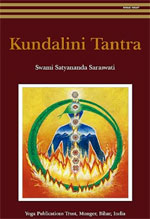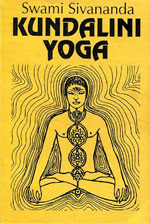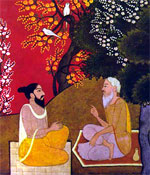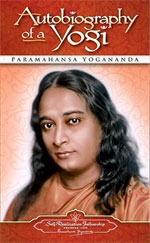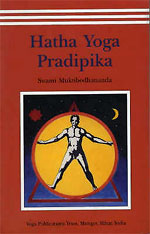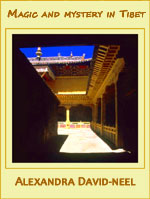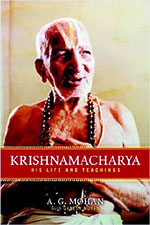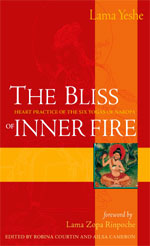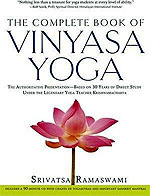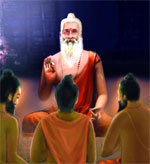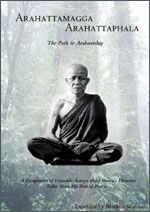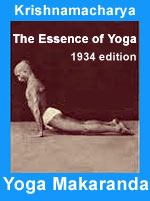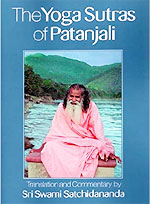
Yoga Book Reviews
YOGA Book Reviews
FREE online books
BooksFree.org | Project Gutenberg | Open Library | ManyBooks | Free-eBooks.net | Bookboon | Smashwords | PDFBooksWorld | PDF Drive | Google Books
NOTICE
(Sep 18, 2023) I've had great difficulty reading this book - the formatting, the structure, the broad strokes with no details and the inconsistensies with my own understanding. I know, this book predates most of renowned yoga texts - but I am not willing to shift my way of thinking to comply with the ideas here, even though it might as well be semantics in the end. Additionally, there is hardly a commentary that makes the book compelling for the actual practice. The book is more like a translation of the slokas without the commentary. The information I get is not as useful as other books I've read (thus my basis for comparison). I could imagine, other authors translating the original work and giving their commentaries would differ. To cut the long story, I'm not continuing with the book - it doesn't feel like the best use of my time.
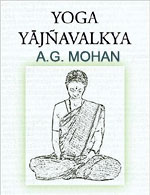 Aug 1 - Sep 18, 2023
Aug 1 - Sep 18, 2023
Yoga Yajnavalkya


Author: A. G. Mohan and Ganesh Mohan
ISBN-10: 9810716486
ISBN-13: 978-9810716486
Genre: Yoga, Eastern Religion, Spirituality, Philosophy
Pages: 190 pages
Country: India
Publisher: Svastha Yoga; 2nd edition
Publication date: August 5, 2013
Rating:
![]()
![]()
![]()
![]()
![]() (2 out of 5 stars)
(2 out of 5 stars)
Glossary
To broaden my vocabulary, I list down words in the book whose meaning is unknown or ambiguous to me.
- extant - still in existence. e.g. Yoga Yajnavalkya is still extant after 2200 years
- involution - the return to what it was before, to its original form e.g. When the Seen is removed out of existence, then the Seer goes into involution (back to Godhead)
- - e.g.
Authortiy on Yoga
Yoga Yajnavalkya was written 2200 years ago, and is one of the earliest authoritative text on yoga predating the writing of Hatha yoga pradipika, Gheranda Samhita, Siva Samhita, Yoga Kundalini and Yoga Tattva Upanishads. In fact, these books borrowed many ideas contained in Yoga Yajnavalkya.
Conversational Format
The narrative is in conversation format between husband and wife, Yogi Yajnavalkya and his wife Gargi as he discussed the deeper layers of yoga with special focus on Kundalini and the spiritual and therapeutic applications of Pranayama.

Book Features
The book stresses that yoga is not just for monks or saddhus but also for householders. It takes effort to dispel the mysteries of Kundalini to make it familiar and accessible. Pranayama is also given the spotlight - techniques, applications, and results. It provides insight on meditation - deities with form and without.
Introduction
Carvaka vs. Sankhya
Carvaka is the philosophy that life was meant to be happy (eat, sleep and be merry). Sankhya is on the other extreme end of the spectrum. It espouses 'enquiry' in searh of the 'right knowledge' - in short, a meaning to existence and not just sex, drugs and rock & roll.
Vedas Proposing Freedom
The Vedas, through yoga, prescribes a code of conduct that benefits the individual and soceity at large (Yamas and Niyamas?).
Seer, Seen and Divine
To understand the Vedas, it's best to see reality comprising of 3 entties and their relationships - Seer (the unchanging true self), Seen (the material world and all its fluctuations) and the Divine (God).
Seen
Seen is everything that exists in the material world that we perceive with our 5 senses, including our thoughts. The world fluctuates and so do our thoughts. This reality is what distracts us because it gets all our attention and we react to it.
Seer
The material world is characterized by fluctions - happy then sad, prosperous then poor, calm then turmoil, etc. But despite this roller coaster ride, there is an entity within us, the Seer, that eternal silent witness. It sees everything in the material world and sees our thoughts, but the Seer remains, unchanged, non-reacting and simply observes.
Divine
The Divine is God, perfect and complete. He is worshipped in various forms - Krishna, Jesus, Allah, etc.
The Relationship between the Seer, Seen and the Divine
Seen and the Seer are Tethered
It would seem that the Seen and the Seer are tethered - that one cannot exist without the other. But that's only because the mind identifies with its thoughts and the perception of the senses. If we break away from the Seen, the the Seer becomes unleashed - we begin to see reality as it really is.
Sankhya Philosophy
Sankhya is saying the Seen world will always fluctuate and there's nothing we can do with it. Thus the only option is for the mind to simply break away from all sense perception, reminding itself that all of perception is not real. In short, Sankhya prescribes awareness and practice - no deity.
Yoga Philosophy
Yoga is essentially the same as Sankhya but adds the concept of a God. That God can help one realize freedom - separating the Seen from the Seer. Thus we can and should have a relationship with the Divine (it should be noted that in Hatha Yoga Pradipika, the deity is not factored-in. It's only the practice as prescribed - no talk of God.).
Vedanta Philosophy
Man's true self and God are one, but before man can see this, he first has to break the illussion of Maya or the identification with the fluctuating material world.
The Practice of Yoga
In Yoga Yajnavalkya, yoga is to merge with the divine in order to attain freedom (again, this is in sharp contrast to Hatha Yoga Pradipika that does not involve itself with God or anything spiritual - it's the practice only).
The Connection between Advaita Vedanta and Saiva/Sakta Doctrines
Name and Form to a Deity
Because of man's limited perception, it is necessary for him to add a name and form to a God - otherwise, God remains an abstract and intangible concept.
The Concept of Prana
Prana is the energy that holds everything together. Without prana, there is no life. But prana cannot be perceived by the senses. We cannot directly control prana, but through yoga, we can indirectly control it (in Shaolin Kung Fu, prana is directly controlled. Thus, a monk can bend the spear using the soft flesh on his neck but redirecting prana there.). The flow of prana can be influenced by the breath, the mind and physical postures. Through pranayama (breath control), the mind is influenced and prana is stabilized.
Prana and Mental State
The distribution of prana is related to a person's mental state - agitated, dull, distracted, focused, and absorbed.
When the mind is absorbed or focused, prana flows into Sushumna and prana dispersion is 96 angulas (5"3') or below. If the mind is agitated, dull or distracted, prana flows along Ida and Pingala and prana dispersion is 108 angulas (~6").
When the mind, body and senses (Seen) are distracted, prana is also dispersed. The goal of yoga is to bring prana back within 96 angulas and this brings the mind into focus or absorption (back to being the Seer). This takes effort, patience and practice - and starts with Yama and Niyama.
Flow of Prana
Prana is subtle energy that flows throughout the body through energy channels called Nadis. There are 72,000 nadis but only 14 are important. Of the 14, these 3 are the most important - Ida, Pingala and Sushumna. Ida is female, on the left side, moon. Pingala is male, on the right, representing the sun. Prana flows only along the Ida and Pingala and from there, prana is distributed to the 72,000 nadis. Prana does not routine flow along the Sushumna - which is the most important nadi of them all. Impurities (toxins, bad diet, pathogens, shallow breathing, bad posture, scattered/malevolent thoughts, etc.) along the nadis block the flow of prana - this results in sickness.
However, through yoga practice (the 8 limbs), the impurties are removed and flow of prana is restored. The 8 limbs are a cleansing process that purifies the nadis.
Sushumna: Vayu and Agni
To explain how Sushumna is related to the Seer and the Seen, we must consider 2 elements - Vayus (pranic winds) and Agni (fire).
5 Vayus
- apana - located at the lower abdomen, takes care of elimination of body waste
- prana - (lower case to distinguish from the overall Prana), located above the diaphragm, associated with respiration or breathing
- samana -
- udana -
- vyana -
Apana vs Prana Vayu
They flow in separate directions but complimentary in their effects on the body. Prana vayu usually flow us while apana vayu flows down. They have a tug-of-war nature and a balance has to be kept otherwise, one dominates the other and trouble happens.
However, Antara kumbhaka pushes down prana vayu while Bahya kumbhaka pushes up apana vayu. If there is imbalance, like if prana vayu is pushed up too much, it could cause coughing. If apana is pushed down too much, then there is menstrual disruption or diarrhea. Vayus have to stay within their own area.
Agni (fire)
Agni and Prana go hand in hand in the same way that fire and air are complementary. Even in the Gyana mudra, fire and air meet for increased combustion. Agni helps the body assimilate food (heat increases digestive metabolism). Agni can be taken metabolically (heat to increase metabolism), theologically (fire burns the illusion of ignorance), and figuratively (the surging fire in your passion). When prana vayu and apana vayu meet in Manipuraka (through bandhas), agni is triggered and this heat awakens Kundalini shakti from its slumber.
Relationship of the Chakras to the Seer and the Seen
- Muladhara chakra - emotion is violence, element is earth, the Seen prevails up to Ajna
- Svadisthana - emotion is xxx, element is water
- Manipuraka chakra - emotion is xxxx, element is fire
- Anahata - emotion is xxx, element is air
- Vishuddhi chakra - emotion is xxxxxx, element is space/ether
- Ajna chakra - emotion is xxxx, element is intelligence
- Sahasrara chakra - emotion is love, element is consciousness, Seer prevails
As the Seer is lost in the world of the Seen (the lower chakras), prana flows along the 72,000 nadis. Sushumna is closed - prana doesn't flow through it. When the Seer transcends the Seen, Kundalini awakens and flows through the Sushumna all the way to Sahasrara (aka Brahmarandhra) while activating all the chakras along the way.
Kundalini Yoga
I will quote the commentary verbatim because I find it conflicting with my current understanding of Kundalini. The commentary says,
"Kundalini is the cause of ignorance, avidya, whereby we mistakenly identify and are caught up in the ever-changing world of the Seen.
Kundalini, the creative force which controls avidya (ignorance), blocks the opening of the Sushumna nadi. Sushumna nadi otherwise leads to Brahmarandhra (another word for Sahasrara chakra). Kundalini, the serpent, guards the entrance of the the door to the Divine by coiling three and a half times around the Siva lingam located at the Muladhara and blocking the opening of the Sushumna with Her mouth. Thus, prana cannot enter the Sushumna unless the Kundalini is moved. To move the Kundalini is to remove the veil of ignorance (avidya) or illusion (maya). The process of involution occurs when the Seen is withdrawn from the base of the Sushumna and the Seer, is able to rise to His true abode and reunite with the Divine, the male aspect of consciousness in the Sahasrara. This is the union between the individual soul (jivatma) and the Divine (paramatma). As the Seen withdraws, the Seer becomes the master. This is also figuratively represented as the union between the Shakti and Shiva."
Kundalini goes up
When Kundalini is awakened, it goes up the Sushumna until it reaches the Sahasrara chakra. It can also mean that individual consciousness moves up to merge with cosmic consciousness. Or, it can mean that the Seen has been dissolved or ignorance and illusion no longer exist, thus the Seer goes into involution back to Godhead.
Kundalini is destroyed or removed
Union is achieved when Kundalini is destroyed because Kundalini represents ignorance and illusion (I really disagree on this one. Kundalini is supposed to be the powerful shakti, sleeping until awakened, so it can go up Sushumna and merge with Consciousness - it does not represent ignorance or illusion).
Prana goes up
"Agni and prana destroy the kundalini, thus freeing the Seer to ascend to his abode." - (again, I disagree. Agni and prana join together, merging energy with heat to wake up Kundalini...not to destroy Kundalini. Again, Kundalini is the powerful shakti, not ignorance or illusion).
Advaita Vedanta
Advaita is one of the schools of the Vedanta philosophy saying that everything is part of the Divine - including the Seen. There is only one - no duality exists.
Sakta Philosophy
The Divine Feminine is the supreme being, the source of all creation, the ultimate reality and can be worshipped in many different forms. Yoga is a path to union with the Divine Feminine.
Unique Features of this Text
- Yoga Yajnavalkya predates many of the standard yoga texts which underscores its authority and credibility
- Yoga Yajnavalkya is a comprehensive and universal yoga book for everyone regardless of sex, creed or religion. It clarifies some misconceptions in current day practice like "OM". OM is not for everyone. It's not a generic mantra - more on it later.
- One can achieve enlightenment through yoga without being a saddhu or an ascetic renunciate. You can be a householder and deal with the daily struggles of normal life.
- Since the format is conversational between husband and wife, the book conveys a message that this yoga is gender neutral and householder-friendly.
- Yoga Yajnavalkya demystifies Kundalini with lucid examples and explanations.
- The presentation of materials are orderly, coherent and logical. There is a sound system to it.
- Prana and Nadis are given ample explanation
- The treatment of Pranayama is thorough and comprehensive.
- Yoga has to be practiced with the proper lifestyle.
- Yoga Yajnavalkya provides a deep insight into meditation.
The Vedic Way of Life
VARNASHRAMA DHARMA
Varnashrama Dharma is the duties or actions that must be done by each person, considering his station in life, and his profession or the division to which he or she belongs. This ultimately leads to freedom for the individual because of efficient functioning of society. ONe's nature ultimately become one's vocation.
But this caste system as practiced today is a corrupt and degenerate version of its original intention - partly due to the Muslim invasion and British colonilization.
Division of Labor
An effective society should have a systematic division of labor. In the Vedic tradtition, there are 4 divisions of labor as follows. But on top of it all is the King or Emperor.
- Brahmins - priests and serve as advisors to a king. They are the thinkers...the brain
- Kshatriyas - soldiers, police. They protect the kingdom against invaders and enforce the law within the kingdom
- Vaishyas - merchants, bankers, lawyers, businessmen, ensuring commerce flows and there is prosperity in the kingdom
- Sudras - service providers, . Peasants who have to feed the population
- Dalits - this is the unwritten 5th caste, the untouchables, uneducated who do menial jobs no else wants to do, street sweepers, latrin workers
Summary of the Book Chapters
1: Yama
Yajnavalkya and wife Gargi were gathered in his hermitage together with some sages. Gargi asks her husband to teach them yoga. Yaj narrated that he asked Bramha for the highest truth - the way to freedom (note, Yaj didn't ask anything about yoga). Bhamha said the way to freedom is to do yoga along the rules of Varnashrama Dharma but without desires - do your duty without any desires. Yaj then explains that yoga has 8 limbs that are ascending - Yama, Niyama, Asana, Pranayama, Pratyahara, Dharana, Dhyana and Samadhi. He explained the many tiers of Yama - conduct or behavior to be in harmoney with society
II: Niyama
Yaj continues with the 2nd limb, Niyama - conduct to self. There are 10 Niyamas and that was discussed.
III: Asana
Yaj continues with Asana - Svastikasana, Gomukhasana, Padmasana, Virasana, Simhasana, Bhadrasana, Muktasana and Mayurasana. With Asana, Yama and Niyama, disease is far away. He advise
d Gargi to practice Shat Kriya, Asana, Yama, Niyama and Pranayama.
IV: Prana vayu
Gargi asks about Shat Kriya (purification of the nadis) and the Prana vayu (energetic winds). Yaj explained the 14 nadis, 10 vayus and instructs Gargi to practice the Nadi Shodhana pranayama.
V: Nadi shodana
Yaj explained in detail, Nadi shodana, one of the pranayamas that purify the body.
VI: Pranayama
Yaj explains Pranayama and its close association to the OM Mantra. He talked about the therapeutic benefits of Pranayama, the ratios, the different types of Pranayama and its effects, right mantra for what Pranayama, of Kevala Kumbhaka, conserving Prana (Shanmukti mudra and asana/OM combo). Yaj explains how to do Pranayama and Mantra chanting depending on your caste. The rise of prana to Sahasrara and the resulting Nada. He stressed the importance of the nityakarma (daily rituals) In my case, my Nitya karma are water therapy, nauli, neti pot, jiwamuthi shodan.
VII: Pratyahara
Pratyahara has 5 different forms and the 4th is enhanced through focus on 18 vital points. The 5th form can produce liberaton by focusing prana on a specific point.
VIII: Dharana
There are 5 types of mental concentration on the Self - Dharana. The 5 forms refer to the deities in the 5 regions in the body. Dharana, through Pranayama can balance the doshas back and cure the resulting diseases from such imbalance.
IX: Dhyana
All great seers have attained realization through Dyana. It is done either in Saguna (with form/attributes) or Nirguna (without form or attributes).
X: Samadhi
Samadhi is the union of Self with the Divine in death. The yogi focuses on the chosen deity in time of dying to be united with it.
XI: Vedic Duties during/after Samadhi
Yaj says nothing should be done while in a state of Samadhi, but once out of it, Vedic duties must be performed.
XII: Seven Steps to Freedom
- 1st stage - reversing the downward flow of Apana vayu to up.
- 2nd stage - awakening Kundalini through heat. This causes Kundalini to ascend through the Sushumna to unite with consciousness in Sahasrara chakra
- 3rd stage - ascension of prana to Anahata chakra
- 4th stage -ascension of prana to the Ajna chakra using OM and visualization
- 5th stage - still on the AJna chakra, one feels a trembling in the head, visions of celestial gardens, the moon and stars
- 6th stage - still on the Ajna, meditating on the deity Vishnu
- 7th stage - self realization at the Sahasrara charka
Chapter 1
Outline
1-5: The qualities of Sage Yajnavalkya
(Sep 4, 2023 p. 37) This exalts Yajnavalkya in a way only a devotee could. Yajnavalkya lives in a hermitage in the forest and held in high regard by the brahmins. He has mastery of yoga, of the Vedas, of his emotions (never angry, always forgiving). He is in a constant state of meditation and awareness.
Yajnavalkya metabolizes all his food, thus is free from disease. Disease is caused by undigested food which becomes toxin in the body. This is another reason why being vegetarian makes you impervious to sickness - veggies are easily digested. One hack? Tough foods like meat could be put in a blender so that the body doesn't take too much effort to digest it.
6-8: Gargi 's request to Yajnavalkya to teach her the essence of Yoga
(Sep 4, 2023 p. 38) Yajnavalkya's wife, Gargi, is also realized in the highest of truth. She requests Yajnavalkya to teach her yoga.
9-19: Yajnavalkya meditates on the Divine, (Narayana) and describes how he approached the Creator (Brahma), to learn the highest truth
Yajnavalkya proceeds to teach yoga to Gargi and other attendant sages, as taught to him by Brahma, the Creator. It is interesting that Yaj did not specifically ask Brahma to teach him yoga, but to teach him supreme knowledge (a closely guarded secret), supreme bliss and eternal freedom.
19-27: The path to freedom (Nivartaka) and the path to bondage (Pravartaka), as explained by Brahma
(Sep 4, 2023 p. 3) Doing what you need to do in life given your station in society, abilities and resources (Varna Sharma Dharma) without desire is the secret to non-rebirth. This process is called Nivartaka.
27-29: The three debts of mankind and the means to overcome them
(Sep 4, 2023 p. 3) To free oneself from debt from these 3:
- Devas - perform sacrificial rites while doing Varna Shrama Dharma (things you have to do in life given your social ranking, resources and abilities)
- Ancestors - procreate
- Rishis/Sages - learn and recite the Vedas
29-40: Brahma explains how one should lead one's life in accordance with Vama Shrama Dharma (doing one's role in society according to the caste system). After explaining the essence of Yoga, Brahma Himself recedes into a state of Yoga
(Sep 4, 2023 p. 43) Even within the caste system, there are several stages where a person is expected to do what is expected of him for the greater being of society as a whole. Some actions are pragmatic and some are simply ritualistic.
41-42: Gargi's request to Yajnavalkya to further explain the knowledge (Jnana) that should go along with one's actions to attain freedom
(Sep 4, 2023 p. 44) Yaj talked about action (karma) with knowledge (jnana). Gargi asked Yaj to talk about knowledge.
43-44: Yajnavalkya's reply that knowledge is nothing but Yoga. Definition of Yoga as the union of the Self (Jivatma) and the Divine (Paramatma)
(Sep 4, 2023 p. 44) Yaj explains that knowledge comes in the form of yoga as having 8 limbs and unites self (Jivatma) with the divine (Paramatma).
45-70: The 8 limbs of Yoga
(Sep 4, 2023 p. 46)
- Yama - moral conduct to others to harmonize oneself with society
- ahimsa - no harm to all beings either by thought, deed or words
- satya - being truthful, no exaggeration, no half-truth, no slant...just the whole unbiased truth
- asteya - don't steal
- bramhacarya - don't put yourself in a position where you can't say NO already to your sexual instinct. You already know where your 'point of no return' is - so don't cross that line
- daya - kindness to all beings
- arjava - integrity. Being honest and straightforward
- kshama - equal treatment for everyone including kings and beggars
- dhrti - steadiness of mind amidst misfortune, prosperity and catastrophe
- mitahara - eat less and eat less often
- sauca - purity. Cleansing the body (bathing, hygiene), mind (no negative thoughts...think of positive outcomes) and emotions (no hate or anger...be forgiving)
- Niyama - your moral conduct to yourself. How you treat yourself in order to be whole and aligned.
- Tapas - austerity, between doing things the easy way or the hard way, do it the hard way with full acceptance
- Santosha - contentment or satisfaction with whatever you have. If you want a Harley but all you have is a bicycle, be thankful for having that bicycle. This is also Stoicism - accepting what you can't change or what you can't have, or what you can't control.
- Astikya - keeping faith that a higher benevolent power is there for your well-being. This is also humility because you cannot say you're the greatest. This means there is more than what meets our personal perception, there is meaning to existence (we're not just a spontaneous biological phenomenon) and that there is a greater intelligence at play. The universe is not random.
- Dana - be giving and sharing with your blessings without any expectation of payback. If you give with a self-serving agenda, then it's not dana - it's just clever manipulation
- Isvarapujana - surrender to a higher being...God, the universe, etc. You can let go and let the 'flow' take you where it takes you - this has divinity stamped on its outcome
- Siddhantashravana - learn from the teachings of yoga, study the scriptures. Read the yoga books (Hatha Yoga Pradipika, Tummo Yoga, etc)
- Hri - being humble (if you can't, best to just shut up), owning up to our mistakes, taking responsibility for our duties, not passing the blame. This gives us a healthy sense of self worth
- Mati - self-inquiry to give us a clear sense of bearing. This clears our mental cobwebs. This develops our spiritual intelligence, as opposed to mental intelligence
- Japa - choosing a mantra and chanting it either verbally or mentally. Feel the meaning of the mantra or feel its vibrational frequency as you verbally chant it. I chant OM or Brahmari. Internal chanting is more powerful than verbal
- Vrata - making a vow and adhering to it. This develops mental fortitude, focus and discipline. This could be doing yoga daily, or doing pranayama 1:4:2:3 for 30 minutes daily
- Asana - (p. 54) these are physical postures making the body firm and strong. They destroy all diseases and eradicate all toxins. Asana also stabilizes and calms the mind. It's a primer for Pranayama and higher spiritual pursuits. In ancient times, asana was a spiritual practice to fortify the body and calm the mind in preparation for higher spiritual pursuits. Today though, especially in fitness gyms, asana is strictly a physical practice for body firmness (sigh).
How many asanas are there in yoga? In the Dhyana Bindu Upanishad, it is said that there are as many asanas as there are varieties of living beings. In Gheranda Samhita, Siva Samhita and Hatha Yoga Pradipika, it is accepted that there are 84 asanas, some more important than others - Siddhasana, Padmasana, Sirsasana, Mayurasana, etc..
- Svastikasana - seated, back straight, feet placed on the opposite inner thigh of the other leg, hands on Gyana Mudra. This destroys all impurities
- Gomukhasana - cow face, left knee above right knee, ankles by the buttocks of the opposite leg.
- Padmasana - lotus pose, left foot on right thigh facing up, right foot on left thigh facing up. Big toes held by the fingers as arms are bound from behind. This version does not say that it should always be the right leg first, unlike all versions
- Virasana - foot over other thigh, other thigh over foot (looks like ardha padmasana)
- Simhasana - similar to Vajrasana but the shins are crossed. Hands on knees, mouth open, drishti on tip of nose
- Bhadrasana - seated, soles of feet together, heels close to groin, hands interlaced cupping the toes
- Muktasana - ankle over ankle by the balls
- Mayurasana - palms together facing down towards the back, elbows by the belly supporing body weight, legs/body lifted up
- Pranayama - (p. 54, Sep 7)
- Pratyahara -
- Dharana -
- Dhyana -
- Samadhi -
PRANA
Extent of Prana
(p 61, Sep 17) Gargi request Yaj to talk about nadi and prana. Yaj says all bodies have 96 angulas (1 angula is the width of a person's finger - so your angula will be different from someone else's). The size of the prana is greater than the body by 12 angulas (so, 108 angulas for the size of a person's prana). So, prana seems to extend about 5 inches beyond the physical body.
Center of the Body
The center of the human body is where agni or fire is located, shaped like a triangle, which is between the anus and the genitalia - thus, the perineum or the Muladhara chakra. It should however be noted that the fire chakra is the Manipuraka chakra about 2 inches below the navel. In yoga, depending on the guru or the author, exact locations or even names vary. But, so what if the center of the body is where the fire is? What's the call to action here?.
Kandasthana
Kandasthana is egg shaped, about 2 inches in height and width, and located below the center of the body.
Kandasthana > Nabhi > Manipuraka chakra
In the middle of the Kandasthana is the Nabhi. In the middle of Nabhi is the Manipuraka chakra at the navel, the origin of all nadis (makes sense since the navel is our unbilical cord where life is drawn in). Manipuraka chakra has 12 spokes that pulls the body together (like a spider with its web).
Kundalini
Kundalini resides above the Manipuraka chakra where it stops the flow of prana by covering the passage way with its mouth as it lays sleeping.
Kundalini is held by the 8 prakrti - the 5 elements, mind, intellect and ego. Because of this, the 'seer' is bound by the 'seen' and thus blocked from its freedom. When Kundalini is awakened, the 'seer' is freed and can then rise up and unite with the divine.
Through the practice of yoga, Apana Vayu (prana that takes care of elimination, located in the anal region) together with Agni (fire) awaken Kundalini. This unblocks the flow of prana. Prana then goes upward through Sushumna and into the Brahmarandhra (Sahasrara). All these nadis and their interconnectedness resemble the vein of a leaf.
14 Nadis
There are 72,000 nadis in our system. 14 are the most important. Of the 14, the Ida, Pingala and Sushumna are the most important. Of the 3, Sushumna is the most important.
- Sushumna - the most powerful of them all, lies in hibernation, dormant and unmanifest. It is located firmly in the middle of the Kandasthana and spans from the lower extremity to the top of the head. Sushumna is the gateway to freedom. It is here where prana journeys to unite with the divine at the Brahmarandhra.
- Ida - (p. 65, Sep 18) Ida is on the left side up to tip of the left nose, Tamasic, moon (nectar part, Amrita), night
- Pingala - Pingala is on the right side, Rajasic, sun (poisonous part), day. It goes upwards up the right side of the nose
- Sarasvati - along the sides of Sushumna, extending up to the tongue
- Kuhu - in front of Sushumna
- Varuni - between Yashasvini and Kuhu, above and below Kundalini
- Pusha - extends up to the right eye, behind Pingala
- Hastijihva - on the side of Ida, extending down to the big toe of the left foot
- Yashasvini - on the right side, from the tip of the toe
- Visvodara - between Kuhu and Hastijihva in the middle of the belly
- Shankhini - between Ghandari and Sarasvati, goes up to the left ear
- Payasvini - between Pusha and Sarasvati, extending up to the right ear
- Alambusha - below the center of Kandasthana, goes down to the base of the anal region
- Ghandari - extends up to the left eye behind Ida
Ida and Pingala
Both are tethered to each other. When prana flows along Ida/Pingala, time is experienced - default reality. When prana flows along Sushumna, time stops (because time is just an illusion) and Samadhi ensues - the mind is absorbed. Sushumna is thus beyond time (during a breath-hold, prana flows along Sushumna, thus I almost always incorporate kumbhaka in my practice).
*** Ida and Pingala are metaphors for "as above, so below", microcosm-microcosm, yin and yang, etc.
10 Vayus
Vayus are pranic winds with specific areas in the system and specific functions
- Prana - the most important
- Apana - resides in the anal and reproductive area. Tethered somehow with Prana, together through Mula bandha and Uddiyana bandha, they generate heat to awaken Kundalini
- Samana -
- Udana -
- Vyana -
- Naga -
- Kurma -
- Krkara -
- Devadatta -
- Dhananjaya -
Ending Thoughts
I thought Yoga Yajnavalkya was just a how-to into the practice of yoga. But this delves into the scholarly and academic aspects of Hindu philosophy - Upanishads, Vedanta, Sankhya philosophy, etc. This was something I wasn't prepared to deal with - I just wanted the yoga practice with enough foundational concept for a deeper understanding. Just the same, I went through the motion, hoping that what I'm reading helps in getting me more established in my yoga practice.
Even though this book predates Hatha Yoga Pradipika, I find HYP to be easier to understand and more comprehensive and detailed (I'm sure this has a lot to do with the commentator and not the original author). With that comparison, I felt that continuing this book would not be the best use of my time - thus I stopped continuing at page 70s in the Prana Vayu section.
--- Gigit (TheLoneRider)
YOGA by Gigit ![]() |
Learn English
|
Learn English ![]() |
Travel like a Nomad
|
Travel like a Nomad ![]() |
Donation Bank
|
Donation Bank ![]()
Leave a comment?
Next Yoga book:

![]()
![]()

![]()
Kriya: Wim Hof-Maha Vedha
(Aug 6, 2023) This 'assembed' kriya is one of the most powerful in Kundalini awakening. It consists of the Wim Hof pranayama and Maha vedha mudra. Complementing that is the Maha mudra and Maha bandha. These are designed to activate prana flow, awaken Kundalini and reverse the aging process...more »»
More on Lazi:
Lazi Local Info
- Resorts - Lazi has some beach/dive resorts on its west coast - Gabayan Riviera, Lazi Beach Club, Bahura Dive Resort. However, the popular area for tourist resorts are in San Juan
- Transport - Lazi is the junction where the jeeps begin their clockwise route (Lazi-San Juan-Siquijor Port) or the counter clockwise route (Lazi-Maria-Larena Port). Because the jeeps are rare with about 2 to 3 trips/day only in the morning, it's practical to just have a motorcycle here in Siquijor. With its affordability (a brand new Rusi motorbike is as low as P45k), people just buy motorcycles...especially those who live up in the mountains.
- The Boulevard - Lazi's main draw is its seaside cobblestone promenade. When the sun goes down, people gather here for eats, drinks, open-air, harbor view and the sunset
- Lazi Port - Kho Shipping, the shipping line operating from Lazi Port, has stopped its service to Cagayan de Oro, Iligan, Dumaguete, Tagbilaran and Cebu. Passengers can go to Siquijor Port or Larena Port for boat services out of Siquijor Island
More on Siquijor Island:
Siquijor Island Local Info
Jeeps - there are only 2 routes for jeeps within Siquijor Island - and they are rare. Most people have their own motorcycle transport.
- Siquijor Port to Lazi - last trip leaves at 3pm from station near market
- Lazi to Siquijor Port - jeeps depart from the Lazi Port area. 5 jeeps, the last trip at 12:30 pm. Lazi to San Juan, P50.
- Larena Port to Lazi - jeeps are unpredictable. As of this writing, there is only 1 jeep plying the Larena-Lazi route. This jeep leaves Larena for Lazi at 9:50am. After that, no more jeep. You'll have to take a tricycle to Siquijor Pob for jeeps going to Lazi
- Lazi to Larena Port - 6am (daily) and 9 am (M-Th)
Food - these were suggested by a local to me
- Lechon manok & liempo - roasted pork belly and chicken at Joel's in Siquijor Poblacion. I've tried this myself...yummy, even if the chicken was no longer hot
- Bibingka - sweetened rice cake by Fidy's Bibingka (P30) in Sawang, Maria. I've come back for this and I buy for other people as well as 'pasalubong' - they love this
- Siopao - at the Rosita store near Thrifty (P25) in Siquijor Poblacion
- Peanut butter - by Rene. Just ask around in Siquijor Poblacion. It's popular
- Torta - sweet cakish bread at the Thrifty story in Siquijor Poblacion
Siquijor Island Map

Siquijor - Dumaguete Boat Trips
(as of Jan 2023)- Montenegro Lines - at Siquijor Port, P234.00/pax, P169/bicycle, 7:30am/10:00am/2:00pm/4:30pm
- Aleson Shipping - at Siquijor Port, 6 am and 6 pm daily, 1:30 pm M-Sat, Regular P200.00/pax, Aircon P250.00/pax
- Ocean Jet - 40 mins,at Siquijor Port, 0919.066.5964, www.oceanjet.net, marketing@ocenajet.net, 6:00am/6:00pm, P350/pax (tourist/open air), P580/pax (business class)



Siquijor - Tagbilaran - Cebu City Boat Trips
(as of Jan 2023)En route to Cebu City, the ferries usually make a stop-over to Tagbilaran (Bohol) to pick-up more passengers or unload.
- Ocean Jet - 8:20 am, at Siquijor Port
To Tagbilaran: P800/tourist & open air, 2 hours (arrive 10:20 am), P1200/business class
To Cebu (Pier 1): P1600/tourist & open air, 4 hours (arrive 12:40 am), P2400/business class - Lite Ferries - at Larena Port, no Senior Citizen discount for online ticket purchase
To Tagbilaran: T-Th-Sun, 3 hours, depart 7 pm - arrive 10 pm, P475/standard (Tourist, PHP 750)
To Cebu: T-Th-Sun, 10 hours, depart 7 pm - arrive 5 am, PHP 605/standard (Senior P484), Tourist, PHP 770 - Apekoptravel - at Larena Port to Tagbilaran: 1:00 pm, xxx hours, P750
Reserve through call or text: Cleare - 0938 283 4760 | Grace - 0936 534 6564 | Jessel - 0961 759 6711, Pay via G-Cash: +63-917-880-1464, Email: momovillageadventure@gmail.com, Facebook messenger: Apekoptravel. Enter your birthday and nationality to get discounts: 0 to 3 years old free, 4 to 9 years old will have 20% discount, 10 years old and above full price, Filipino Senior Citizens will also have 20% discount
Siquijor - Plaridel Boat Trips
(as of Jan 2023)- Lite Ferries - at Larena Port, T-Th-Sun, 2:00 am, 5 hours, PHP?
Siquijor - Cebu (Liloan) - Cebu City BUS Trip
(as of Jan 2023)There is only one bus plying this route - Sugbo Urban. Tourist class coach, a/c, comfortable, Sun-Fri (these dates keep changing). P420 for bus, P275 for ferry to Liloan. Larena Port around 5 am, makes a clockwise roundtrip around Siquijor Island - Larena, Enrique Villanueva, Maria, Lazi (stops at Lazi market for breakfast and leaves 6:50 am), San Juan, Siquijor (arrives 8am, P50 from Lazi to Siquijor Poblacion) and catches the 1pm ferry at Larena Port (Sundays at 3 pm) for Liloan, Cebu and resumes its land route. Arrives Cebu City (South Bus Terminal) 10 pm.
Sugbo Urban is the cheapest and most convenient way because it goes around the island (clockwise) along the circumferential road, passing through - Enrique Villanueva, Maria, Lazi, San Juan, Siquijor...and back to Larena where it takes the ferry at 1 pm. This saves you the hassle and high transport cost of a tricycle. Besides, it's a long trip from the other side of the island to be taking by tricycle.
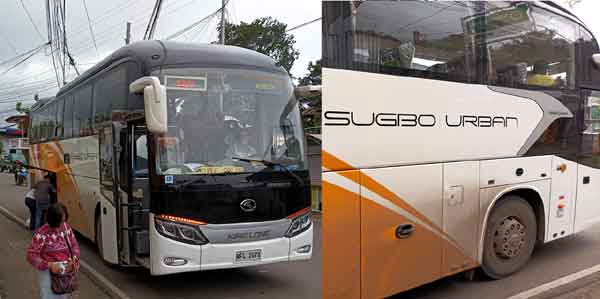

Suggested Destinations After Siquijor Island
These are the nearest popular destinations from Siquijor by boat
- Bohol - Bohol is an island northeast Siquijor. Tourist attractions are Chocolate Hills, Tarsier Monkey, Loboc River Cruise, Beaches of Panglao, whale sharks (recent offering), freediving (recent offering)
- Cebu - Cebu City is the usual gateway into the Visayas. But in Cebu Island itself, there are many offerings - Whale Sharks of Oslob, sardine run at Moalboal,Thresher Shark of Malapascua
- Dapitan (Zamboanga del Norte) - I haven't been there but a lot of island ferries ply this port. There must be something here.
- Dumaguete - Dumaguete is a small charming progressive coastal town in Negros Oriental. Cafe and restaurants line the famous Boulevard Boardwalk. Tourist attractions include Japanese Shrine, Casaroro Falls, snorkeling along the southern coastline (Dauin, Masaplod Norte, etc), Balinsasayao Twin Lakes
- Plaridel (Misamis Occidental, Mindanao) - I haven't been there but a lot of island ferries ply this port. There must be something here.
Blogs
Siquijor Island
- Goodbye Siquijor April 18, 2024
- January Chronicles: Bandilaan Meditation January 2024
- My January Yoga Practice: A Journal January 31, 2024
- Jan 2024: Squid, Balangawan, Margarita Pizza January 2024
- December Chronicles: Yuletide Season December 30, 2023
- December Snapshots: Bolo Bolo Dip, Christmas Lunch, Tuba Denizens, Friends Forever, Men Working, Cow / Crow December 1-30, 2023
- Eggplant Bulad Pizza December 20, 2023
- Canghaling Cave November 14, 2023
- Kings and Queens November 13, 2023
- Barangay Vote-Buying October 22, 2023
- Real Estate Mapping October 1, 2023
- Learning Cebuano: Oct October 1-31, 2023
- Oct Food Hack: Pizza, Kinilaw, Coconut Bread, Fish Okuy, Carrot Omelette,Lemon-Grass Tea October 2023
- Sep Snapshots: Fisherman, Granny, Pedicure, Big Fish, Garbage September 1-30, 2023
- Sep Food Hack: Fish Tinola, Ratatouille, Chayote Omelette, Flat Bread September 2023
- Together Forever Sep 11, 2023
- The Cigarette Talk Sep 1, 2023
- Siquijor Star Meditation Center Aug 31, 2023
- The Lost Dogs of Siquijor Aug 27, 2023
- Moving to a Bungalow! Aug 22, 2023
- Aug Chronicles: CDO produce August 31, 2023
- Aug Snapshots: Pan de Sal, Palpitate, Taho, Tuna, Pineapple August 1-31, 2023
- July Chronicles July 31, 2023
- July Snapshots July 1-31, 2023
- Learning Cebuano: July July 1-31, 2023
- June Chronicles June 31, 2023
- June Snapshots June 1-31, 2023
- Learning Cebuano: June June 1-31, 2023
- May Chronicles May 31, 2023
- May Snapshots May 1-31, 2023
- Learning Cebuano May 1-31, 2023
- In Search of a Cool Climate May 25, 2023
- The 64 km Bike Ride May 16, 2023
- Lazi Fiesta May 15, 2023
- The Boulevard Opening May 5, 2023
- April Snapshots April 1-30, 2023
- Learning Cebuano...Again! April 1-30, 2023
- Kris Visits Siquijor Mar 17 - Apr 15, 2023
- Exploring Siquijor with Marky Mar 25 - Apr 11, 2023
- Siquijor Healing Festival April 5-8, 2023
- The Talk at United Church of Christ April 2, 2023
- Mar Snapshots Mar 1-31, 2023
- Vigil for the Ghost Ship of Siquijor March 31, 2023
- Judging an Essay on Gender Equality Mar 29, 2023
- The Thief, the Shaman, the Elves and the Police Mar 20, 2023
- Finally Acquiring the Motorbike Mar 18, 2023
- Bitcoin Blunder Mar 15, 2023
- Maria's Unsung Beaches Mar 11, 2023
- Lagaan Falls Mar 9, 2023
- Tibhong Spring Water Source Mar 8, 2023
- Bolo-Bolo Natural Spring Mar 2, 2023
- Reasons to Get a Wife March 1, 2023
- Feb Snapshots Feb 28, 2023
- Camagung-Ong Natural Spring Feb 28, 2023
- Heeeere's Johnnie! Feb 26, 2023
- Manifesting a Motorbike from Thin Air? Feb 18, 2023
- The 'Bad Guy' of Siquijor Feb 15, 2023
- Amazement from Drivers License Renewal in Siquijor Feb 15, 2023
- Locong Falls Feb 9, 2023
- Inguinal Hernia? Goodbye ABS! Feb 4, 2023
- Jan Snapshots January 31, 2023
- In Search of Tubod Cold Spring Jan 27, 2023
- 1:4:2:3 Nadi Shodana Jan 26, 2023
- Lazi's Boulevard Jan 22, 2023
- Lazi: A Monthly Stay Jan 21, 2023
- 7 Days in Maria, Siquijor Jan 14-21, 2023
- Capilay Spring Jan 17, 2023
- Siquijor: In Search of Resonance Jan 9-14, 2023
- Riding Around Siquijor's 86km Coastal Road Apr 3, 2012
- Exploring the Cantabon Cave of Siquijor Feb 23, 2012
- Jovee and Missy's Excellent Adventure Nov 6-7, 2010
- Freediving in Siquijor's Marine Sancturaries Apr 23-24, 2010
- Island Tour of Siquijor Apr 22, 2010
- Kram's Siquijor Wedding Apr 21, 2010
Currency Converter
»» back to Yoga
»» back to Book Review
»» back to Homepage
ARCHIVE 2025:
JAN
1970 |
1973 |
1975 |
1976 |
1979 |
1981 |
1996 |
2000 |
2001 |
2002 |
2003 |
2004 |
2005 |
2006 |
2007 |
2008 |
2009 |
2010 |
2011 |
2012 |
2013 |
2014 |
2015 |
2016 |
2017 |
2018 |
2019 |
2020 |
2021 |
2022 |
2023 |
2024 |
2025 |
ALL BLOGS
